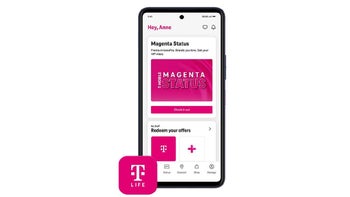I left the Apple cult, but I greatly miss this particular iPhone feature
I just miss my magnets, man.
This article may contain personal views and opinion from the author.

After a multi-year commitment with an iPhone 13 Pro Max and a brief affair with a high-end Xiaomi phone that I absolutely loved, it's back to Android full-time for me. No, I'm not getting rid of my MacBook, thank you very much, I have just successfully moved away from what I consider the weakest part of the Apple ecosystem, and off to greener pastures I go.
The limiting nature of iOS and the on-setting dullness of using an iPhone for a few years now finally caught up to me, and the suffocating ennui of Apple's iPhone finally took its heavy toll.
Now a happy user of a superb Android foldable phone that I am absolutely head-over-heels in love with (the Vivo X Fold 3 Pro is an absolutely stunning piece of technology), there's just one single feature that makes me deeply miss the iPhone.
Just like my colleague Victor, who recently bemoaned the lack of a proper alternative to Face ID on Android, Apple had seemingly trapped another soul in the beaten-up, but still rather solid walled garden. The feature I'm talking about is the MagSafe wireless charging, and its magnetic attachment functionality in particular.
Magnets, how do they work?
MagSafe, having debuted on the iPhone with the iPhone 12 generation in 2020 and being an integral part of any other iPhone since (with a few exceptions like the iPhone SE 2022 and the recently announced iPhone 16e), is a pretty ingenious feature that lets you easily attach a MagSafe wireless charger or any other MagSafe accessory to the back of your iPhone.
This hardware feature consists of multiple magnets in a circular shape around the wireless charging coil at the back of the iPhone, allowing you to easily stick a charger or any compatible accessory. All with the help of nifty little magnets.
In my opinion, that's the single best new iPhone feature in this decade, 3nm chips and tetraprism cameras be damned.
If you're like me, and you've used an iPhone for a healthy amount of time, you've definitely accumulated half a drawer box of MagSafe accessories. Pop sockets, external powerbanks, wallets, phone stands, car stands/wireless chargers, and desk stands––whatever you can think of, I've used, and there's a healthy chance I've bought one.
Now, it's 100% on me that I won't and shouldn't be able to use my MagSafe accessory collection with an Android phone.
But then again, why shouldn't I? Why discard all the excellent accessories I've gotten through the years and not use them as intended?
The problem with using MagSafe accessories on Android
Well, if I want to use any MagSafe accessories with the Vivo foldable I'm currently using, I certainly could, but I have to resort to getting a third-party MagSafe case. That's precisely what I did, but the overall experience is definitely inferior to using the same accessories on an iPhone (as expected).
First things first, you have to get a third-party MagSafe case, which is already pretty limiting depending on what device you pick and if there are such accessories available for it in the first place.
Now, a quick search among the wonders of Chinese e-commerce reveals that MagSafe-compatible cases exist for pretty much any modern Android smartphone, even for more unorthodox ones. However, the majority of these cases are often of rather questionable quality and dubious properties, so it's pretty much a trial-and-error experience. A case will never bring the same native experience as standard MagSafe, as the magnets embedded in the accessory are usually slightly weaker.
Next up, it's the overall compatibility. The case I got for the Vivo foldable? Fairly good, but aside from the sturdy magnets, its nameless manufacturer haling from China had also incorporated a fingerprint magnet feature, which means my bodily oils are typically displayed at the rear of the phone, which… isn't very appealing.
What's more, sometimes the wireless charging coil may not line up well with the magnets in the case you buy. Unfortunately, that's what happened to me––I can't charge my Android phone with my car's wireless charger due to that specific reason.
The light at the end of the tunnel
It gets worse before it gets better, and the Qi2 standard is here to address all of my woes with MagSafe compatibility on Android.
The Qi2 standard heavily borrows from Apple's MagSafe and adopts the same circular magnet design and wireless charging speeds, essentially porting over Cupertino's solution to the Android side of the yard.
The problem is that no phone manufacturer has fully adopted Qi2 just yet.
Sure, the Galaxy S25 series is Qi2-ready, which means that you can charge it with a Qi2, Qi, or a MagSafe charger, but it lacks the internal magnetic components that allow MagSafe or Qi2 accessories to attach to the phone natively. To achieve that, you need to buy a special case from Samsung itself, which features the circular magnet array in the rear.
And that's fine, given that Qi2/MagSafe reportedly add around 0.7mm in thickness to any device, I'd see why Samsung might have opted NOT to include the Qi2 magnets inside its latest devices. After all, we are all pursuing thinness these days.
Hopefully, future Android flagship will feature the full Qi2 shebang, even if it adds some extra thickness, as the added versatility is definitely worth it.
However, once you've grown accustomed to Apple's way of doing things and don't necessarily want to use a case, it's challenging to move away from the iPhone, which offers a seamless and intuitive experience, one that I will deeply miss.













Things that are NOT allowed: